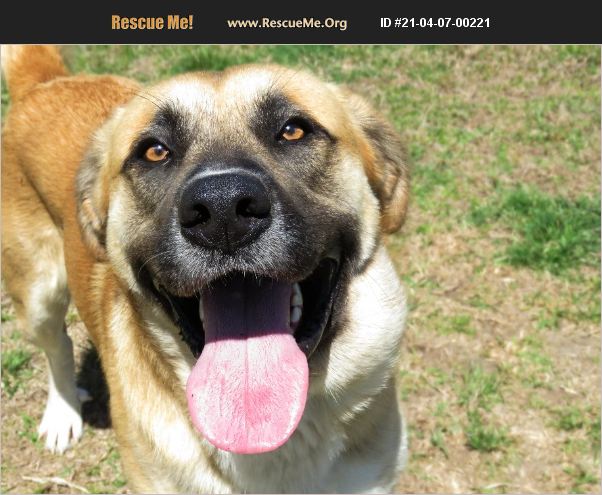Animal no longer available
Visit a different page:CanyonRescue Me ID: 21-04-07-00221
No longer available

About Canyon
Canyon is a laid-back boy that also loves to play. He will run around the yard chasing after his toys. He would also be great as an inside dog and more than likely will enjoy laying by your feet and getting lots of pettings. Canyon is a 2.5-year-old male Shepherd/ Pyrenees mix that weighs 80 pounds. He will be neutered and microchipped before going home. He does have something on his neck that we suspect may be a salivary mucocele. You can read below about what this is in case this is what he actually has. A salivary mucocele, also known as a salivary gland mucocele or sialocele, is a swollen area associated with saliva (spit) leaking from a salivary gland into surrounding tissues. It can be caused by damage to either the salivary gland, which produces saliva, or the salivary duct, which is the passageway for saliva from the gland to the mouth. What does a salivary mucocele look like? Dogs and cats have several salivary glands, but the most common place for a salivary mucocele is on or beneath the lower jaw or under the tongue. If the mucocele is on/under the jaw, a large swelling will be seen underneath the skin in that area. How is a salivary mucocele diagnosed? For the most part, salivary mucoceles are easy to diagnose. All that is usually needed is to remove some of the fluid and cells by suctioning them out with a needle and syringe, a process called aspirating. The salivary fluid is examined under a microscope to confirm the type of fluid and to look for bacteria in case the mucocele is infected. What is the treatment for a mucocele? Occasionally, the veterinarian will drain the mucocele to relieve some of the pressure on the neck and face. Almost all drained mucoceles refill with saliva again, so this is only a temporary solution. Antibiotics and anti-inflammatory medications may also be needed depending on if the mucocele is infected or if the pet has a lot of inflammation and pain. Surgery is often needed to remove the gland. If the mucocele is caused by a damaged duct, sometimes surgically creating a new opening in the duct can solve the problem without removing the gland. Fortunately, though, there are multiple salivary glands in the mouth so removing one will not have a major effect on saliva production. Once in a while, multiple surgeries are needed to ensure all diseased salivary tissue is removed.
Cooke County
Gainesville, Texas
Compatibility
- Good with Most Dogs
- Good with Kids and Adults
Personality
- Average Energy
- Average Temperament
Health
- Needs to be Neutered
- Vaccinations Current






Facebook Share/Comments
We block people who post offensive messages. See a problem? REPORT NOW
Please ✔ check "Also post on Facebook" after typing a question or comment.